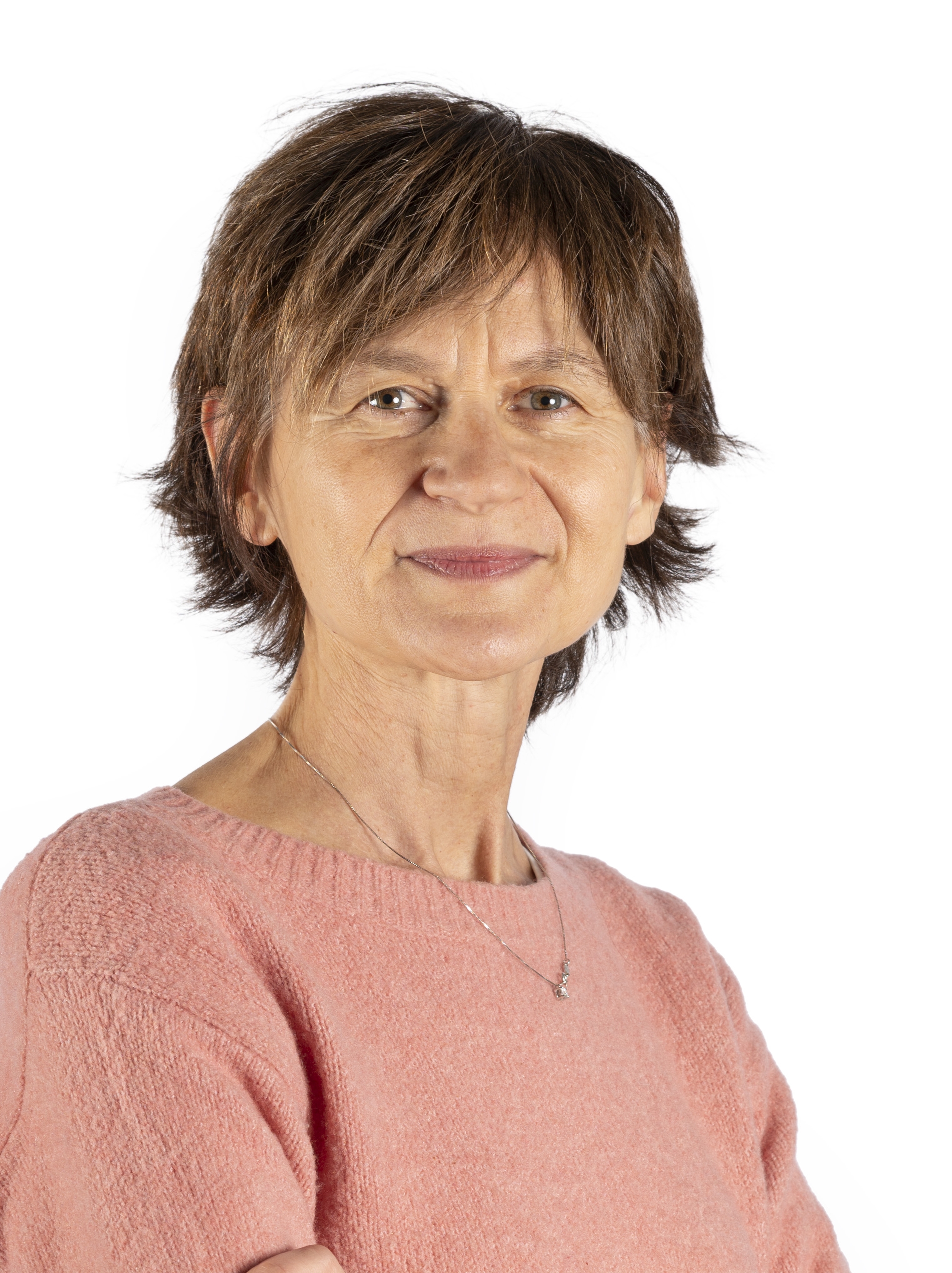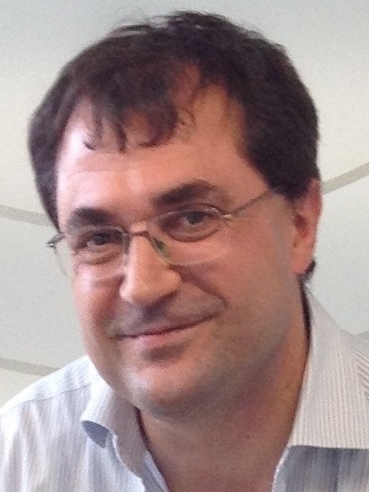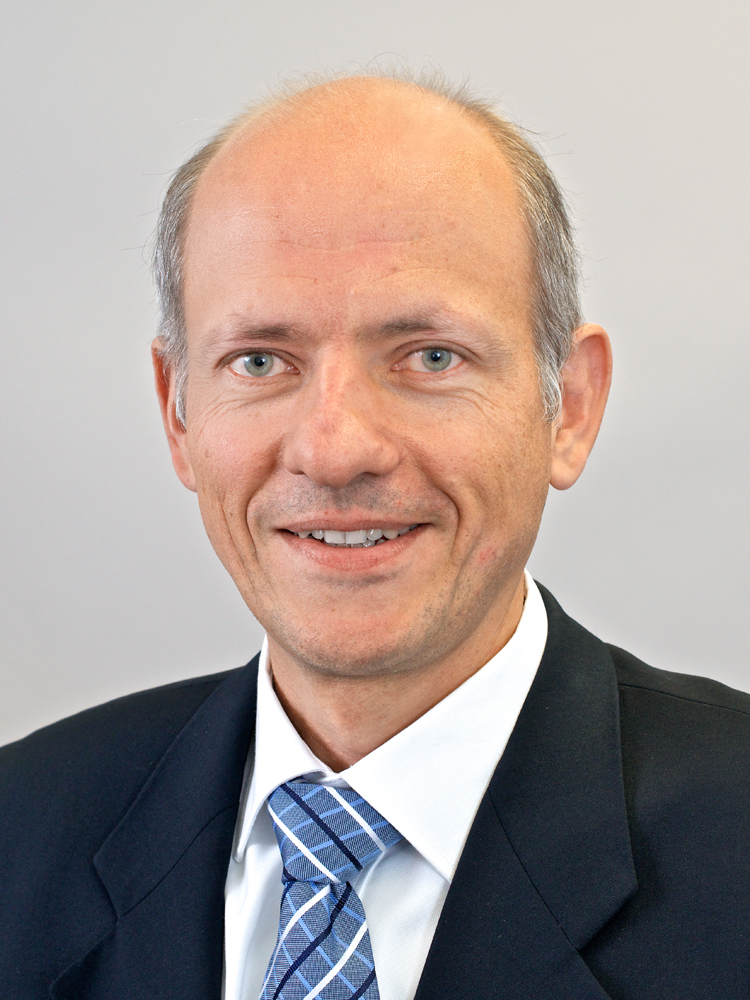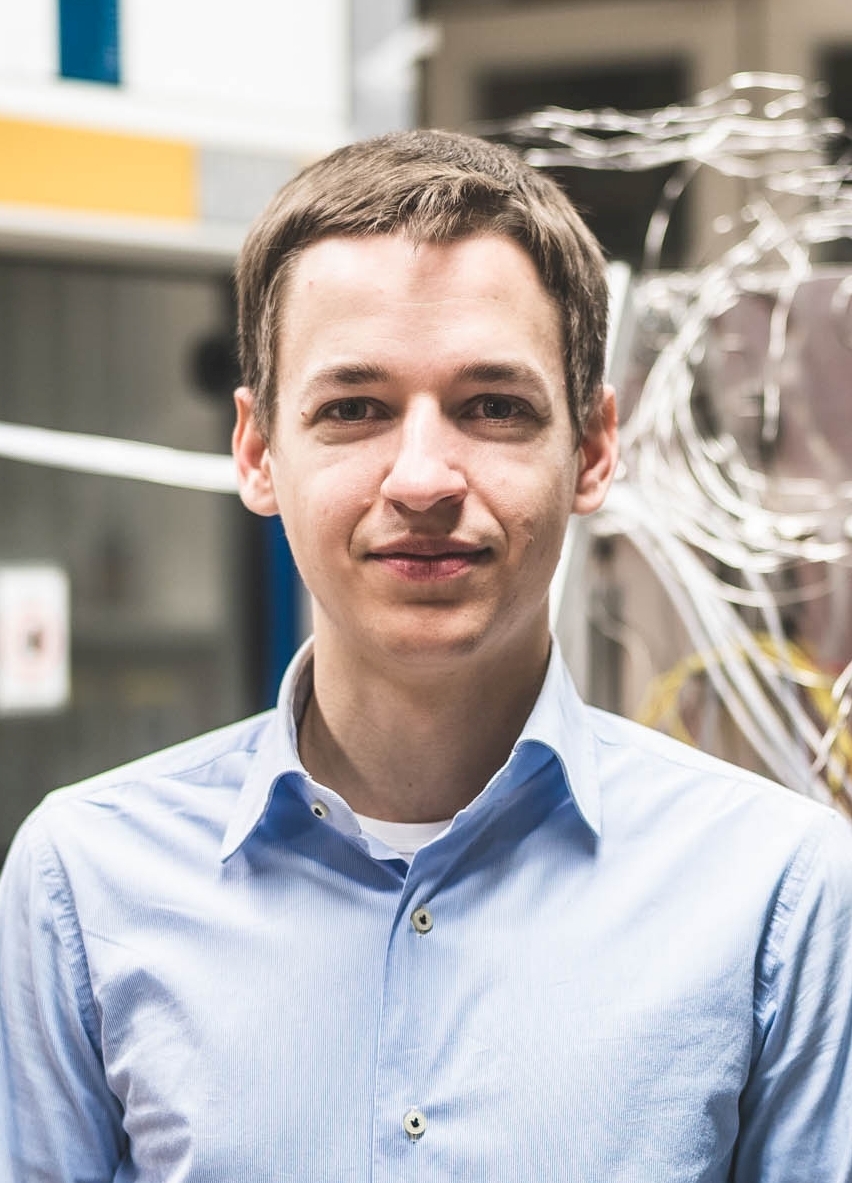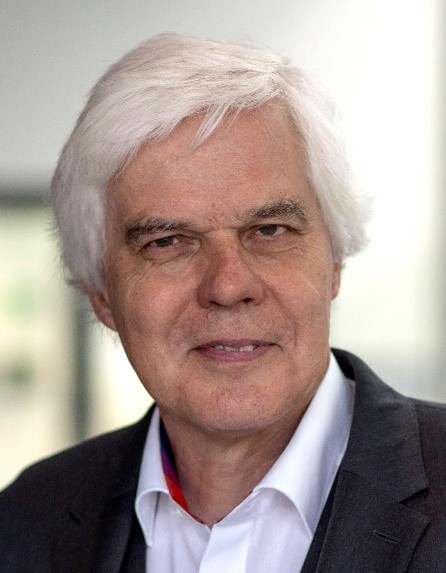Prof. Dr. Alessandra Beretta
Politecnico di Milano, Italy
Politecnico di Milano
Abstract: From classical to spatially resolved kinetic studies for future emission control (Tandem Talk with Prof. Groppi)
From classical to spatially resolved kinetic studies for future emission control: the axial evolution of methane consumption rate in the low temperature oxidation over Pd-based catalysts
Introduction
Spatially resolved operando measurements can provide a deeper understanding of the kinetics and mechanism of complex catalytic systems. The access to temperature, concentration, surface measurements along spatial and temporal coordinates can in fact reveal unique features, not easily accessible from differential or integral reactor systems. After a review of some key methodological characteristics of the use of sampling probes in packed bed reactors, we address a case study of specific interest for the field of emission control: the abatement of CH4 emissions in three-way-catalysts with Pd/PdO. It is known that optimal performance is obtained operating in slight defect of oxygen. However, the mechanism and kinetics of catalytic CH4 oxidation on supported Pd are complex and still under debate.
Methods
A commercial Pd-Rh based catalyst was used in the form of a 400 CPSI/6 mils washcoated ceramic honeycomb. A 39 mm long honeycomb was housed in a 6x6 channels sample holder inserted in a stainless-steel reactor (L = 38.5 cm, I.D. = 1.63 cm) positioned inside a 30 cm tube Carbolite furnace. Spatially resolved temperature and concentration axial profiles were collected by means of a sliding quartz capillary technique as described in [1]. Analyses of reactants and products were performed by a Micro-GC. Experiments were performed at constant GHSV of 50000 h-1 referred to the honeycomb volume. The effect of lambda was investigated in a range from 0.99 to 1.02 solely by varying O2 concentration with N2 to balance, while the remaining inlet gas mixture - representative of the typical exhaust composition from stoichiometric CNG (0.15 vol.% CH4, 0.6 vol.% CO, 0.1 vol.% H2, 2-10 vol.% H2O, 10.7 vol.% CO2) - was fixed.
Results
CH4 concentration profiles along the axial coordinate show that at some position along the monolith an abrupt increase (one order of magnitude) of methane consumption rate occur. The transition shifts progressively downstream on increasing λ. Inspection of O2 concentration profiles shows that transition occurs at the same oxygen mole fraction (i.e. partial pressure) threshold for all the investigated λ. Experiments performed at different H2O feed concentration show that, while water strongly inhibits CH4 oxidation rate under high O2 conditions, it has no effect on the PO2 threshold level for regime transition. On the other hand temperature was shown to have a major impact on it, which correlates well with the Pd/PdO transition as predicted by Cathy Chin et al. [2], thus suggesting that the boosting effect is associated with the incipient reduction of the catalyst.
References
[1] A. Donazzi, D. Livio, M. Maestri, A.Beretta, G. Groppi, E. Tronconi, P. Forzatti, Angewandte Chemie International Edition 50 (2011) 3943-3946
[2] Y. H. C. Chin, M. García-Diéguez, and E. Iglesia, Journal of Physical Chemistry C, 120 (2016) 1446–1460
Prof. Dr. Sara Colussi
University of Udine, Italy
University of Udine
Abstract: Emission control and mechanochemistry: a joint venture for sustainable catalysis
Emission control and mechanochemistry: a joint venture for sustainable catalysis
The scientific community is facing nowadays multiple challenges that ultimately involve the future of next generations, and each of these challenges must be tackled with a sustainability-oriented approach in order to be effective. Within this scenario, our research group is successfully implementing mechanochemistry as a green route for catalyst preparation. Mechanochemical synthesis consists in the exploitation of mechanical forces to prepare a catalyst starting from its powder precursors in the form of metals, metal oxides, or corresponding salts [1]. In our lab we have optimized a procedure that uses dry powders and requires relatively mild energy and short milling steps, thus avoiding the need of solvents and thermal treatments associated with conventional wet synthesis methods, minimizing energy consumption and waste production. Apart from being “greener”, the mechanochemical approach for catalysts preparation has led to unexpected results, and has paved the way to a world of materials with new and unpredictable properties. For example, Pd/CeO2 catalysts for exhaust methane abatement prepared by milling have shown reaction rates almost ten times higher than those of a conventional impregnated counterpart [2], and have proven to be very effective also in comparison with a commercial three-way catalyst [3]. Moreover, when combined with platinum, their stability in presence of steam was significantly improved compared to corresponding impregnated samples thanks to the stabilization of an optimum Pd-PdO ratio [4,5]. The mechanochemical synthesis applied to Pd-ceria can also alter NOx desorption dynamics for passive NOx adsorption [6] and yield to a distinct reaction mechanism for methane dry reforming [7]. Recently, we have applied mechanochemistry also to the “hot” field of CO2 capture and conversion, particularly for the preparation of dual functional materials that couple CO2 adsorption sites with catalytic active sites, observing that mechanically prepared materials show higher adsorption capacity and increased catalytic activity for reverse water-gas shift reaction. In general, we have observed that mechanochemical synthesis can change dramatically catalyst properties, highlighting the potential of this technique to disclose novel sustainable routes in the field of emission control.
References
[1] L. Yang et al., Mechanochemical Synthesis of Solid Catalysts and Application in Catalytic Reaction, ChemCatChem 2024, e202301519
[2] M. Danielis et al., Outstanding Methane Oxidation Performance of Palladium-Embedded Ceria Catalysts Prepared by a One-Step Dry Ball-Milling Method, Angew. Chem. Int. Ed. 2018, 57, 10212
[3] M. Danielis et al., Pd/CeO2 Catalysts Prepared by Solvent-free Mechanochemical Route for Methane Abatement in Natural Gas Fueled Vehicles, Ind. Eng. Chem. Res. 2021, 60, 6435
[4] A. Mussio et al., Structural Evolution of Bimetallic PtPd/CeO2 Methane Oxidation Catalysts Prepared by Dry Milling, ACS Appl. Mater. Interfaces 2021, 13, 31614
[5] N.J. Divins et al., Investigation of the evolution of Pd-Pt supported on ceria for dry and wet methane oxidation, Nat. Commun. 2022, 13, 5080
[6] A. Toso et al., Key Properties and Parameters of Pd/CeO2 Passive NOx Adsorbers, Ind. Eng. Chem. Res. 2022, 61, 3329
[7] J.D. Jiménez et al., Identification of Highly Selective Surface Pathways for Methane Dry Reforming Using Mechanochemical Synthesis of Pd−CeO2, 2022, 12, 12809
Abstract: From classical to spatially resolved kinetic studies for future emission control (Tandem Talk with Prof. Beretta)
From classical to spatially resolved kinetic studies for future emission control: the axial evolution of methane consumption rate in the low temperature oxidation over Pd-based catalysts
Introduction
Spatially resolved operando measurements can provide a deeper understanding of the kinetics and mechanism of complex catalytic systems. The access to temperature, concentration, surface measurements along spatial and temporal coordinates can in fact reveal unique features, not easily accessible from differential or integral reactor systems. After a review of some key methodological characteristics of the use of sampling probes in packed bed reactors, we address a case study of specific interest for the field of emission control: the abatement of CH4 emissions in three-way-catalysts with Pd/PdO. It is known that optimal performance is obtained operating in slight defect of oxygen. However, the mechanism and kinetics of catalytic CH4 oxidation on supported Pd are complex and still under debate.
Methods
A commercial Pd-Rh based catalyst was used in the form of a 400 CPSI/6 mils washcoated ceramic honeycomb. A 39 mm long honeycomb was housed in a 6x6 channels sample holder inserted in a stainless-steel reactor (L = 38.5 cm, I.D. = 1.63 cm) positioned inside a 30 cm tube Carbolite furnace. Spatially resolved temperature and concentration axial profiles were collected by means of a sliding quartz capillary technique as described in [1]. Analyses of reactants and products were performed by a Micro-GC. Experiments were performed at constant GHSV of 50000 h-1 referred to the honeycomb volume. The effect of lambda was investigated in a range from 0.99 to 1.02 solely by varying O2 concentration with N2 to balance, while the remaining inlet gas mixture - representative of the typical exhaust composition from stoichiometric CNG (0.15 vol.% CH4, 0.6 vol.% CO, 0.1 vol.% H2, 2-10 vol.% H2O, 10.7 vol.% CO2) - was fixed.
Results
CH4 concentration profiles along the axial coordinate show that at some position along the monolith an abrupt increase (one order of magnitude) of methane consumption rate occur. The transition shifts progressively downstream on increasing λ. Inspection of O2 concentration profiles shows that transition occurs at the same oxygen mole fraction (i.e. partial pressure) threshold for all the investigated λ. Experiments performed at different H2O feed concentration show that, while water strongly inhibits CH4 oxidation rate under high O2 conditions, it has no effect on the PO2 threshold level for regime transition. On the other hand temperature was shown to have a major impact on it, which correlates well with the Pd/PdO transition as predicted by Cathy Chin et al. [2], thus suggesting that the boosting effect is associated with the incipient reduction of the catalyst.
References
[1] A. Donazzi, D. Livio, M. Maestri, A.Beretta, G. Groppi, E. Tronconi, P. Forzatti, Angewandte Chemie International Edition 50 (2011) 3943-3946
[2] Y. H. C. Chin, M. García-Diéguez, and E. Iglesia, Journal of Physical Chemistry C, 120 (2016) 1446–1460
Prof. Dr. Henrik Grönbeck
Competence Centre for Catalysis and Chalmers University, Sweden
Competence Centre for Catalysis
Chalmers University
Abstract: NH3-SCR over Cu-CHA from First Principles
NH3-SCR over Cu-CHA from First Principles
Transition metal promoted zeolites are used to catalyze a range of reactions where the selective catalytic reduction (SCR) of NO with NH3 as reducing agent is one important example. In the presentation, I will review our recent work developing a first principles based microkinetic model for NH3-SCR over Cu-CHA at low- and high-temperatures with frequent comparisons to experiments [1,2,3]. Challenges describing the reaction kinetics from first principles will be discussed with focus on the issues describing the system within density functional theory calculations and complications arising from the dynamic nature of the active site.
References:
[1] L. Chen et al., ACS Catal. 10, 5646 (2020)
[2] Y. Feng et al., ACS Catal. 11, 14395 (2021)
[3] Y. Feng et al., J. Phys. Chem. 128, 6689 (2024)
Prof. Dr. Oliver Kröcher
Paul Scherrer Institut, Switzerland
Paul Scherrer Institut
EPFL
Abstract: Emission abatement for future renewable fuels
Emission abatement for future renewable fuels
On the way to carbon-neutrality in 2050, the world has started to electrify the transport of passengers and goods, using batteries for energy storage. For this reason, research interest in exhaust gas catalysis for fossil fuels such as gasoline and diesel for light-duty vehicles and passenger cars is decreasing. However, it is expected that gaseous and liquid fuels will continue to play an important role for all mobility services that require high energy densities. This applies in particular to long-distance road transport, off-road applications, shipping and aviation, where combustion engines and turbines are likely to continue to prevail in the far future. Carbon-neutral energy carriers, such as renewable methane, green methanol, DME, OME, etc. or even carbon-free molecules such as ammonia are being discussed as fuels, posing new challenges for exhaust gas catalysis, which are being addressed by research. In the talk, examples from research at PSI will be presented, showing how lower exhaust gas emissions can be reached when using these alternative fuels in the future. In case of methane abatement, we combined novel catalyst concepts with dynamic lambda control strategies, to strongly promote methane oxidation and prevent catalyst deactivation. When ammonia is used as fuel for marine applications, ammonia slip has to be considered besides significant amounts of NOx and N2O in the exhaust gas. When iron zeolites are used for emission abatement, the parallel occurrence of SCR, SCO, N2O decomposition and N2O-SCR reactions requires deep understanding of the reaction network and catalyst mechanisms. We could show how different iron sites on the surface of the catalyst collaborate in the reaction network enabling the synergistic abatement of NOx and N2O on iron zeolites.
Abstract: SO2 poisoning of Cu-CHA in NH3-SCR: insights from X-ray absorption spectroscopy
SO2 poisoning of Cu-CHA in NH3-SCR: insights from X-ray absorption spectroscopy
I will talk about recent advancements in the understanding of SO2 poisoning of Cu-CHA catalysts employed for NH3-assisted SCR reaction. The main emphasis will be given to the results obtained using the X-ray absorption spectroscopy (XAS) and related synchrotron-based techniques. Making use of the element selectivity and structural sensitivity of XAS, it was possible to identify the intermediates of SCR cycle that are most prone to react with SO2, to characterize the products of this reaction and to suggest a possible poisoning mechanism.
I will also present a summary of recent major technical and methodological developments at BM23 and ID24-DCM XAS beamlines of the European Synchrotron Radiation Facility where the main results were obtained, with a particular emphasis on in situ and operando chemical studies.
Abstract: Overview of future emission legislation for Internal Combustion Engine based drivetrains with a focus on EURO7 legislation
Overview of future emission legislation for Internal Combustion Engine based drivetrains with a focus on EURO7 legislation
An overview of current emission legislation will be presented, starting from latest decided EU7 requirements, that include Passenger Car (PC), Light Duty Commercial Vehicle (LCV) und Commercial Vehicle (CV) w/ gross vehicle weight higher 3.5 tons. Requirements of ww leading markets will be included.
Main regulation trends are identified, e. g. including “real world driving measurement” (RDE). Pollutants in focus are NOx, N2O and PN.
Due to the expected market relevance for the next more than one decade, some key challenges and solution will be discussed for CV segment as an example.
Robust and effective solution for the gaseous components will need in any case a system approach, due to the fact neither engine nor exhaust gas treatment system (EGT) “alone” will be to get over the hurdles.
Enhanced focus on PN emission is expressed by changing regulated size spectrum of regulated PN (PN23 → PN10) that requires adapted filter substrates and coatings.
Dr. Heike Többen
Purem GmbH, Germany
Abstract: A Journey Through the Evolution of Mobile Exhaust Technology – a Story to be Continued?
A Journey Through the Evolution of Mobile Exhaust Technology – a Story to be Continued?
The first approaches to the problem of exhaust gases and their harmful effects on health can be found in the literature as early as the 1950s. However, it took a few more years before the issue was actually seen as an integral part of vehicle development. In addition to the further development and optimization of combustion processes, exhaust gas aftertreatment became the focus of emission reduction and has since become increasingly important.
However, a lot has changed in the design of exhaust aftertreatment systems since then. While in the first systems only a single catalytic converter was sufficient to convert the pollutant components to comply with the emission limits, exhaust gas aftertreatment systems are now more like small chemical reactors with a variety of different functions.
The article describes how exhaust gas aftertreatment for mobile applications has changed over the decades since its introduction and the challenges that have had to be overcome. The development of legislation and its influence on emission reduction is illustrated using the example of the PC for Europe. The currently pending EU7 legislation is discussed again in detail. Based on the current and future emission limits, examples of exhaust gas aftertreatment will be shown and the challenges that need to be overcome in the development of such systems.
The presentation will conclude with a look into the future: What challenges do we expect for emission control in the future?

